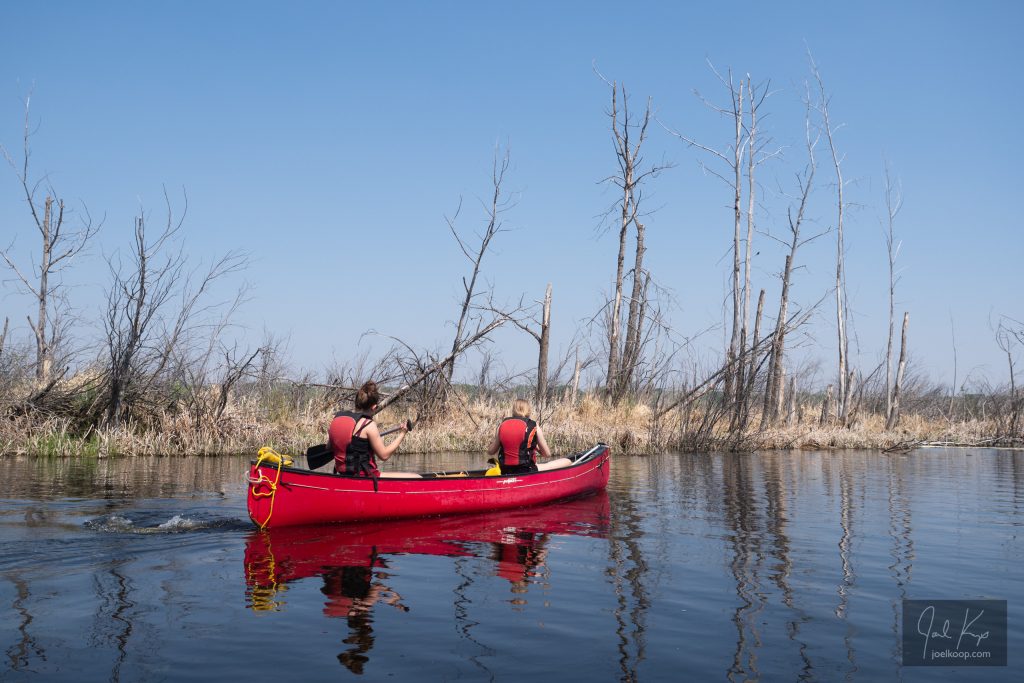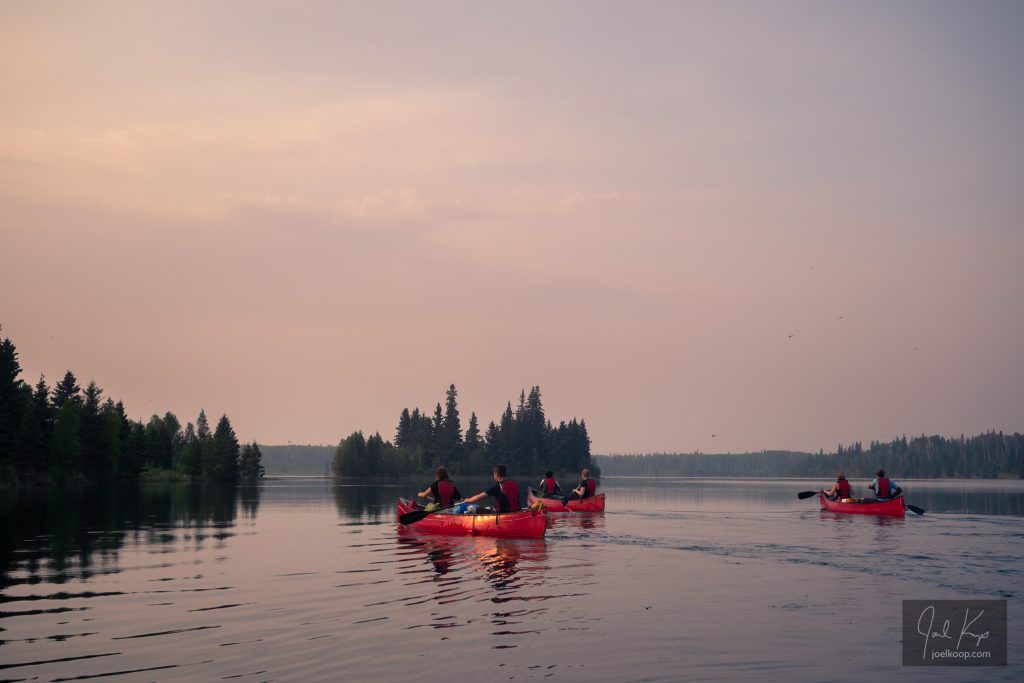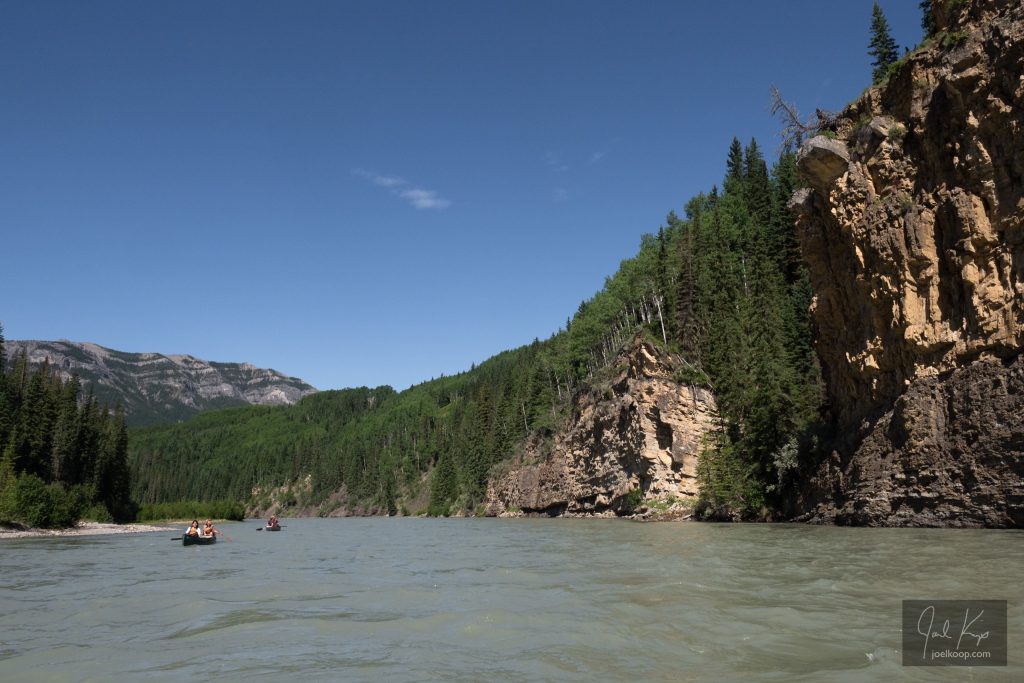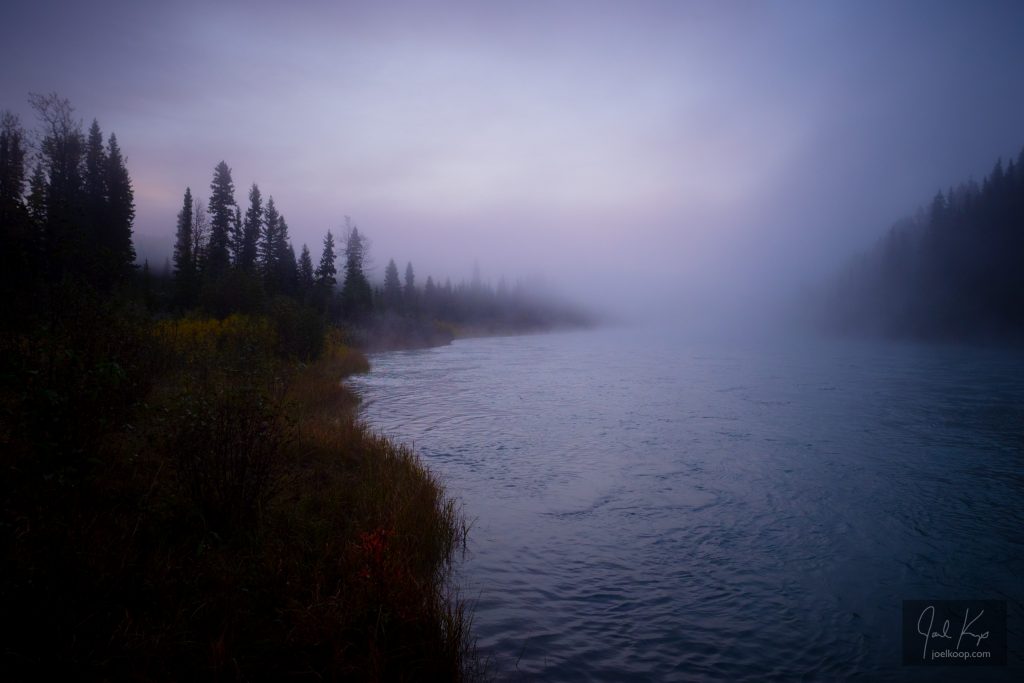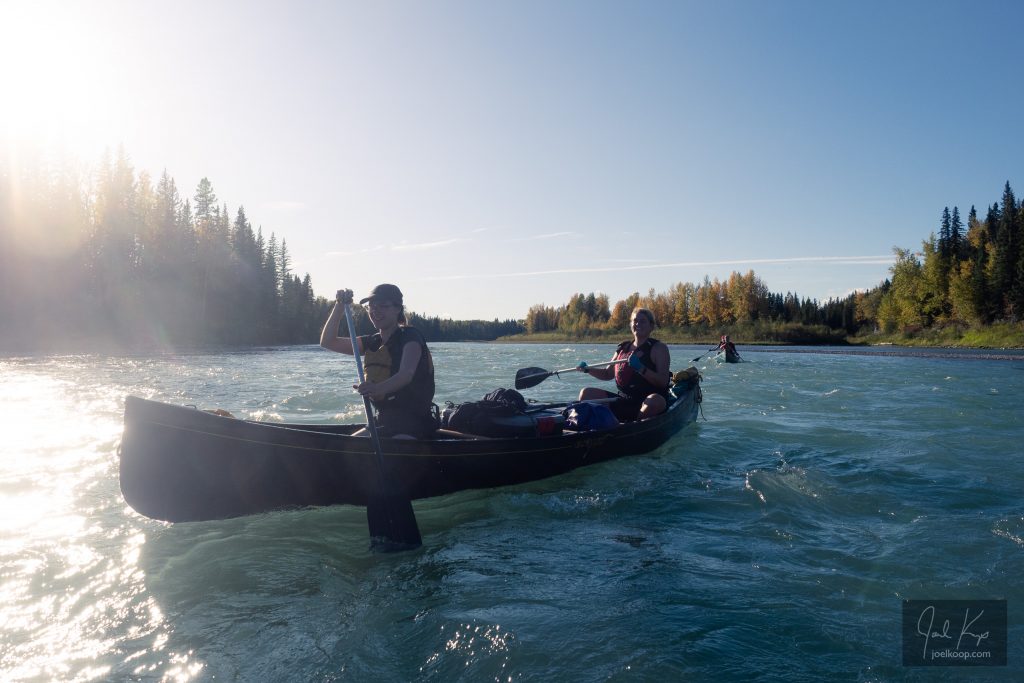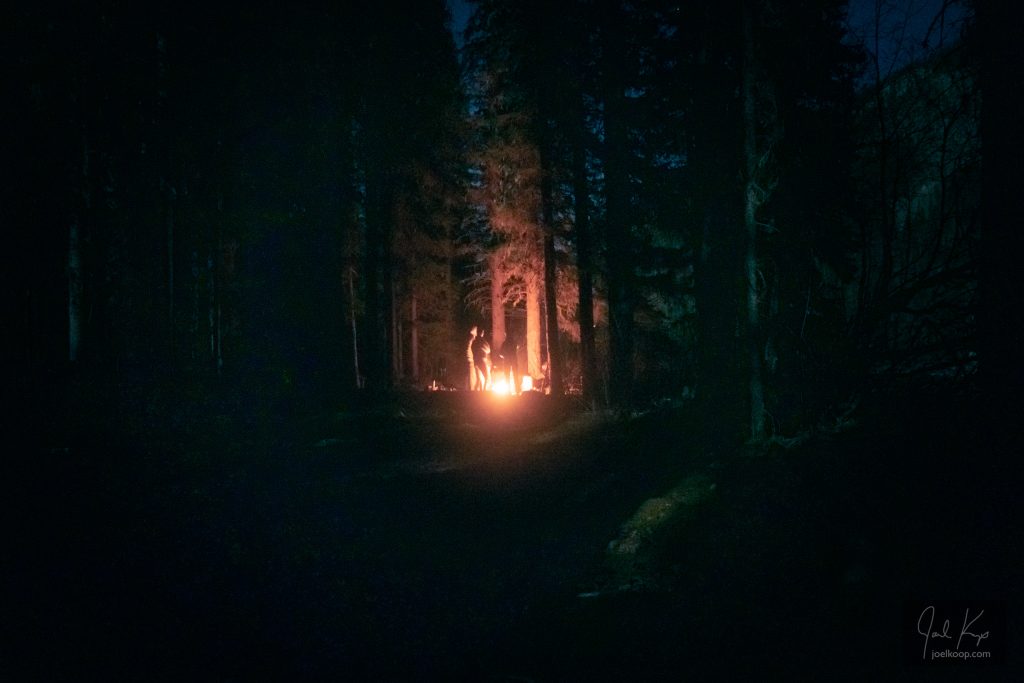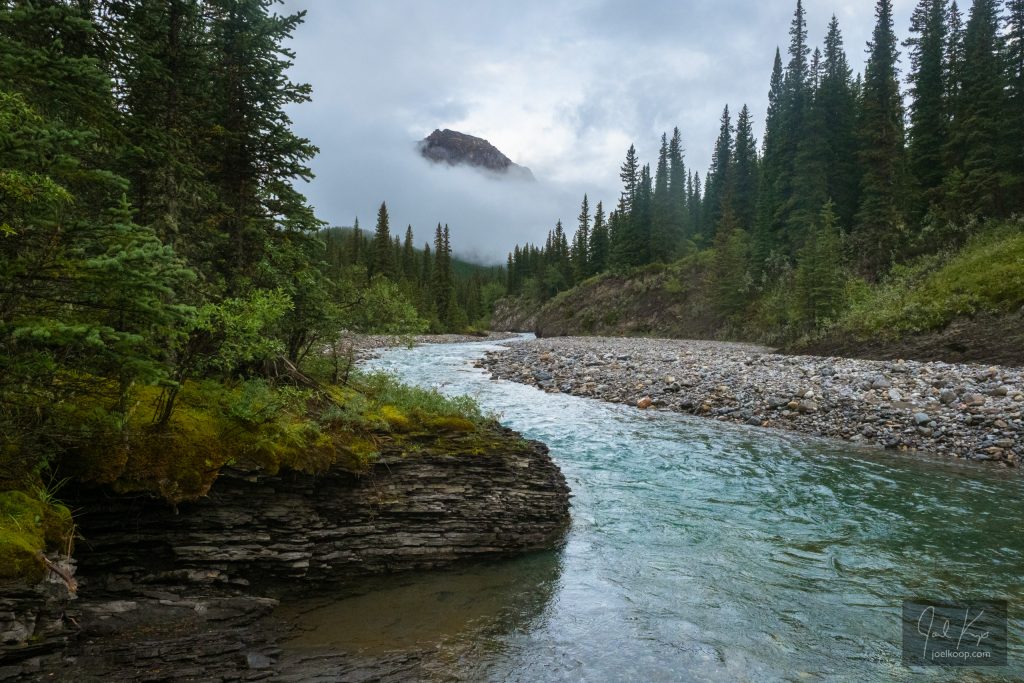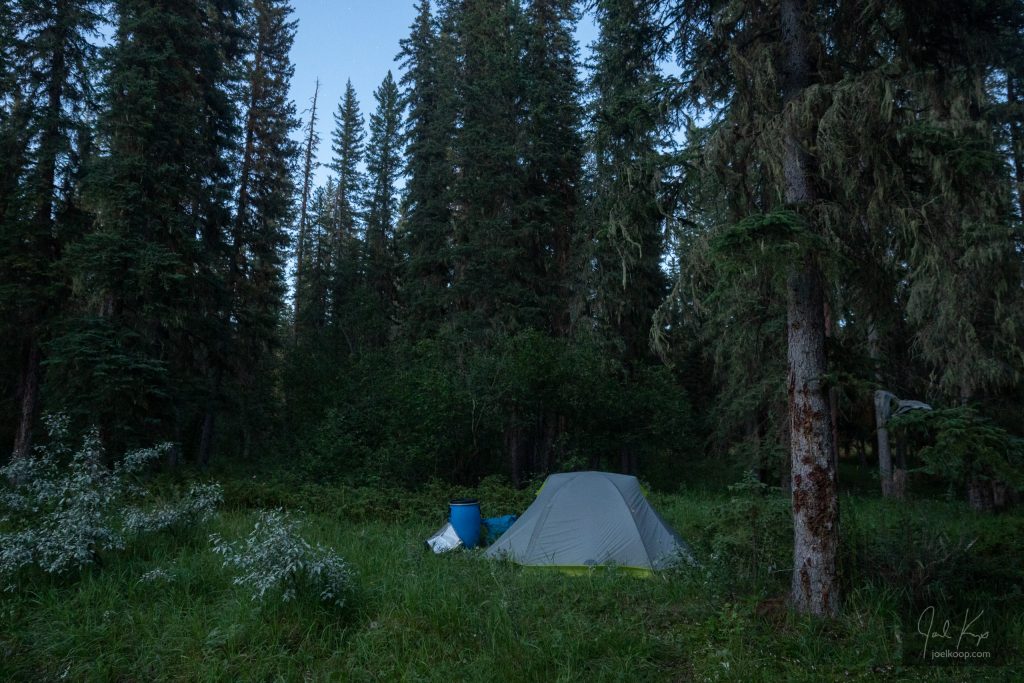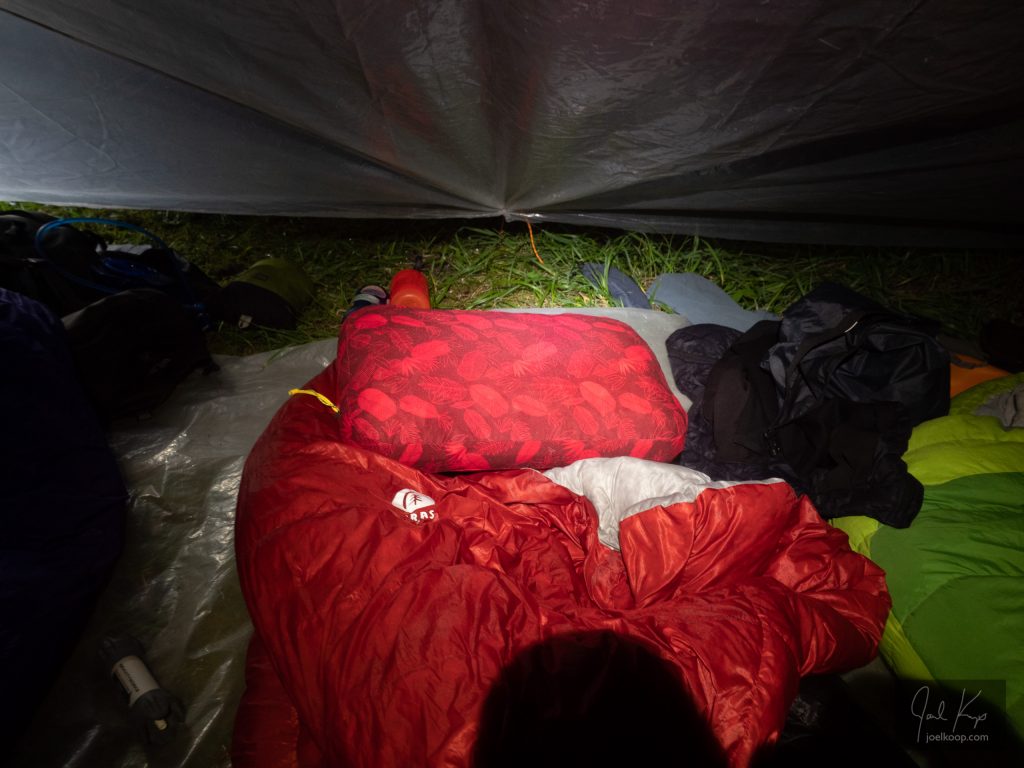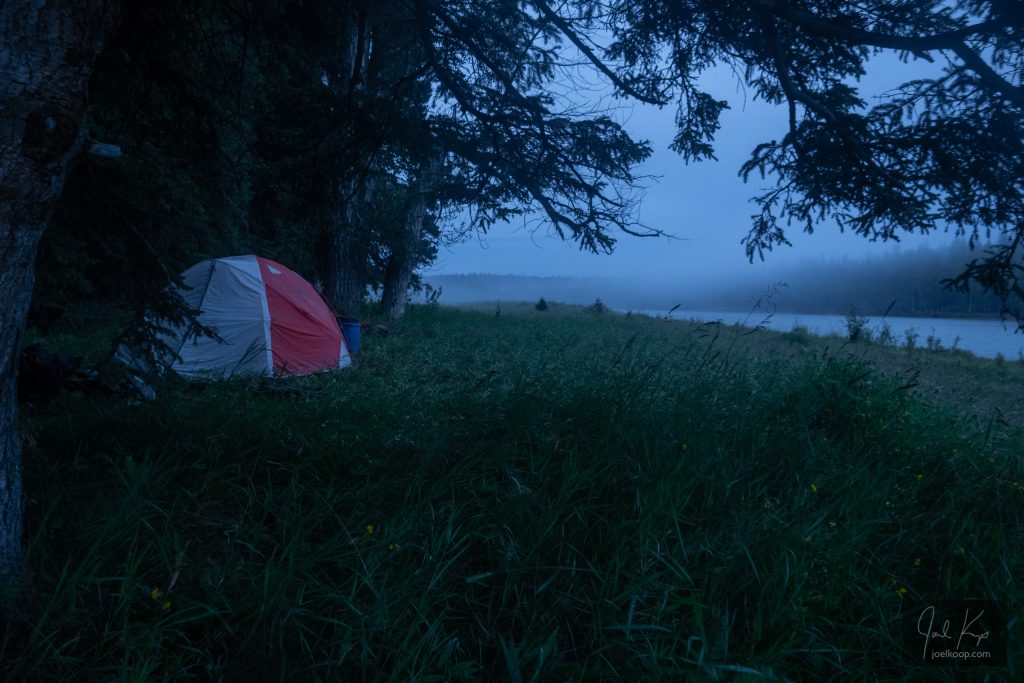Paddling can be a hard skill to learn, so before we leave on trips, we have to teach people how to paddle. With one of the groups I was leading, this took the form of an afternoon paddle down the Battle River, which barely has any current at all, into Driedmeat Lake. We were canoeing around a swampy island when we heard a crashing and then a big splash. We had startled this moose, and it swam across the channel in front of us, ran up the bank and disappeared into the forest.
This series is during spring 2020, when all my trips are likely going to be cancelled for this next summer due to COVID-19.
